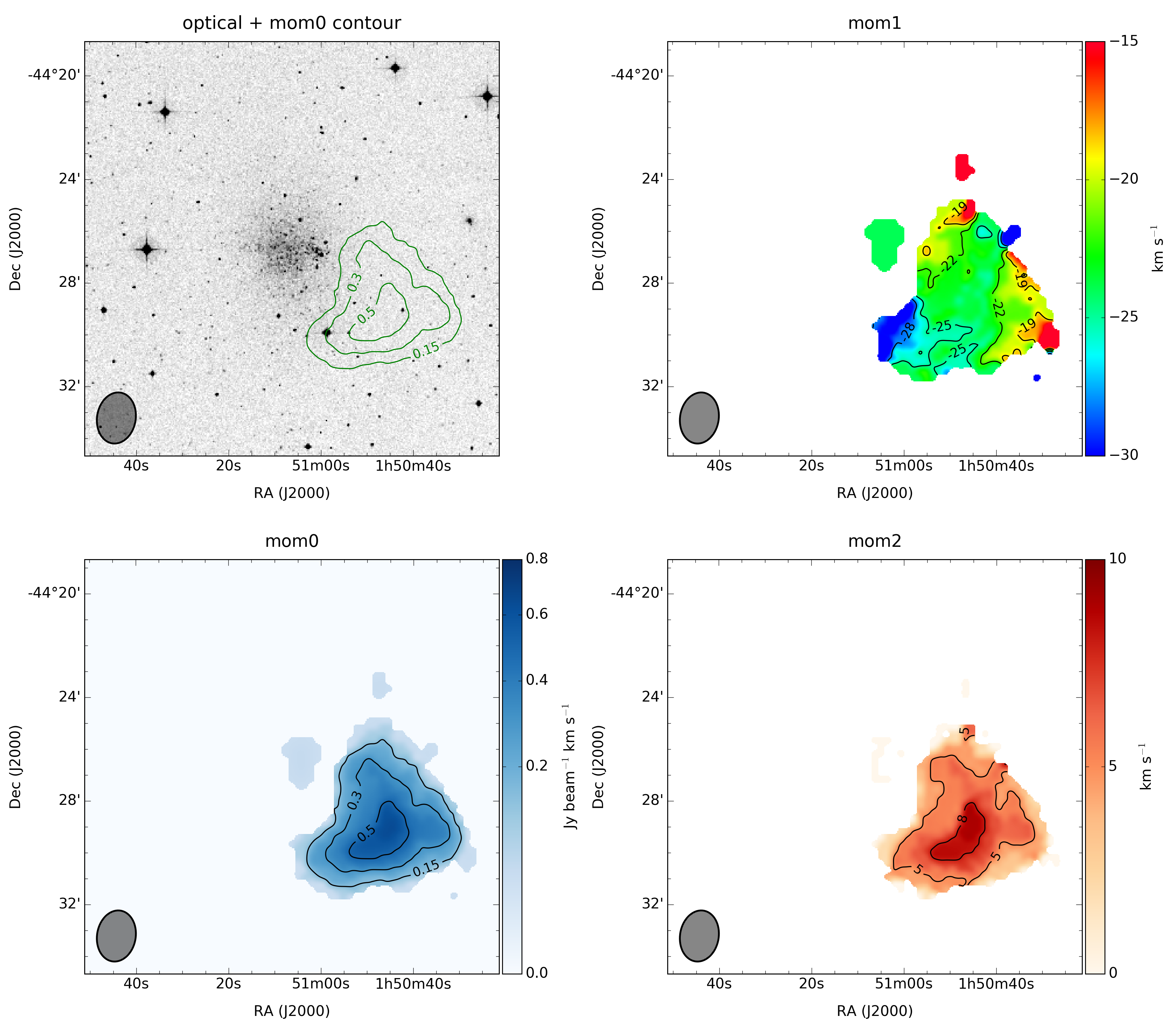ESO245-G007

ESO 245-G007 (HIPASS
J0150-44) also known as the Phoenix Dwarf Galaxy, is a member of the
Local Group (DTRGB = 420 ± 10 kpc). Its distance has been
well constrained by several authors (e.g., Young et al. 2007). Our ATCA HI
mosaic of ESO 245-G007 is shown in Fig. 6, revealing an extended HI cloud
embracing the stellar core to the south-west. We detect HI emission from about
-40 to -8 km/s, no clear velocity gradient is seen. The HI emission associated
with the Phoenix galaxy is also clearly detected in the re-calibrated HIPASS
data. Phoenix is likely a transitional dwarf galaxy as previously suggested by
Young & Lo (1997), St-Germain et al. (1999) and Young et al. (2007) who carry
out detailed studies of its HI emission. Martinez-Delgado et al. (1999)
investigate the stellar content of the Phoenix Dwarf Galaxy and find a
predominantly old population oriented north−south and a more compact,
young population aligned east−west; the latter shows an asymmetry in
its distribution with more blue stars in the south-western part of the galaxy.
Later stellar velocity measurements of -13 ± 9 km/s (Gallart et al. 2001,
Irwin & Tolstoy 2002) confirmed that the HI cloud is indeed associated with
the galaxy. Young et al. (2007) use deep VLA HI data of Phoenix to investigate
mechanisms which may transform gas-rich irregulars into gas-poor dwarf
spheroidal galaxies. As the HI cloud is associated with the most recent star
formation in Phoenix, they suggest that the gas expulsion may have been caused
by winds from supernovae. Using our ATCA maps we measure an HI flux density
of FHI = 2.3 Jy km/s, corresponding to an HI mass of MHI
~ 105 M☉. For comparison, St-Germain et al. (1999)
measure FHI = 4.0 Jy km/s with the ATCA, while Young et al. (2007)
measure FHI = 2.95 ± 0.10 Jy km/s with the VLA (single
pointing).
Reference:
Koribalski et al. 2018
* LVHIS database
* LVHIS homepage
* next